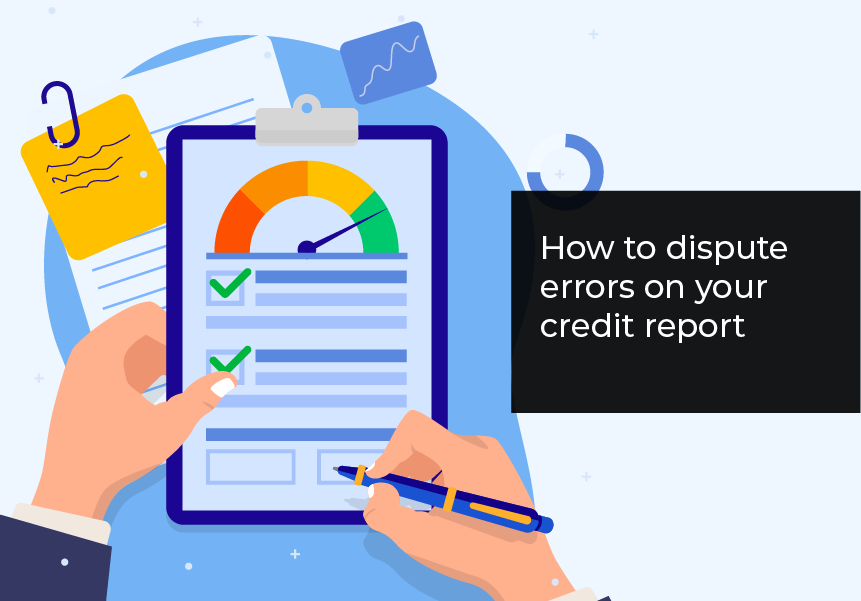
Credit reports play a crucial role in determining your financial health. They affect your ability to secure loans, rent apartments, and sometimes even get a job. However, these reports are not infallible. Errors can and do occur, and they can have significant negative impacts on your credit score. Disputing these errors is essential to maintain an accurate credit history. Here’s a comprehensive guide to help you navigate this process.
Step 1: Obtain Your Credit Reports
The first step in disputing errors on your credit report is to get your hands on the actual reports. You are entitled to a free credit report from each of the three major credit bureaus—Experian, Equifax, and TransUnion—once every 12 months. You can request these reports at AnnualCreditReport.com.
Pro Tip:
Stagger your requests so you get a report every four months from a different bureau. This way, you can monitor your credit year-round for free.
Step 2: Review Your Reports Thoroughly
Once you have your credit reports, go through them meticulously. Look for any discrepancies or unfamiliar accounts. Common errors include:
- Incorrect personal information (name, address, social security number)
- Accounts that don’t belong to you
- Closed accounts reported as open
- Incorrect account balances
- Incorrect credit limits
- Duplicate accounts
Pro Tip:
Create a checklist of items to verify on each report to ensure you don’t miss anything.
Step 3: Gather Supporting Documentation
If you find errors, the next step is to gather evidence supporting your claim. This could include:
- Bank statements
- Payment records
- Correspondence with creditors
- Any other relevant documents
Having solid evidence will bolster your case when you dispute the errors.
Step 4: Write a Dispute Letter
Crafting a well-structured dispute letter is crucial. Your letter should clearly outline the errors and include your supporting documentation. Here’s a template to get you started:
[Your Name]
[Your Address]
[City, State, ZIP Code]
[Date]
[Credit Bureau Name]
[Address]
[City, State, ZIP Code]
Subject: Dispute of Inaccurate Information in Credit Report
To Whom It May Concern,
I am writing to dispute the following information on my credit report. I have identified the items below as errors and am requesting that they be corrected or removed.
- [Item 1: Describe the inaccurate information]
- [Item 2: Describe the inaccurate information]
Enclosed are copies of supporting documents (highlighted) that validate my claims. Please investigate this matter and correct the disputed items as soon as possible.
Sincerely,
[Your Name]
Enclosures: [List of enclosed documents]Pro Tip:
Send your dispute letter via certified mail with a return receipt requested. This will provide proof that your letter was received.
Step 5: Contact the Data Furnisher
In addition to contacting the credit bureaus, you should also reach out to the creditor or entity that provided the incorrect information (known as the data furnisher). Inform them of the error and provide the same supporting documentation.
Step 6: Follow Up
Credit bureaus typically have 30 days to investigate your dispute. After this period, they will send you the results of the investigation. If the error is corrected, great! If not, you can:
- Request that a copy of the dispute statement be included in your file and in future reports.
- File a complaint with the Consumer Financial Protection Bureau (CFPB) if you are unsatisfied with the resolution.
Pro Tip:
Keep detailed records of all your communications, including dates, names of representatives you spoke with, and the content of discussions.
Step 7: Monitor Your Credit
After the dispute process is complete, continue to monitor your credit reports regularly. This will help you catch any new errors early and ensure that previous issues have been resolved correctly.
Pro Tip:
Consider signing up for a credit monitoring service. These services can alert you to changes in your credit report and help protect against identity theft.
Conclusion
Disputing errors on your credit report can be a daunting task, but it is essential for maintaining your financial health. By following these steps, you can correct inaccuracies and ensure that your credit report accurately reflects your creditworthiness. Stay vigilant, keep thorough records, and don’t hesitate to take action when you spot errors. Your financial future may depend on it.
